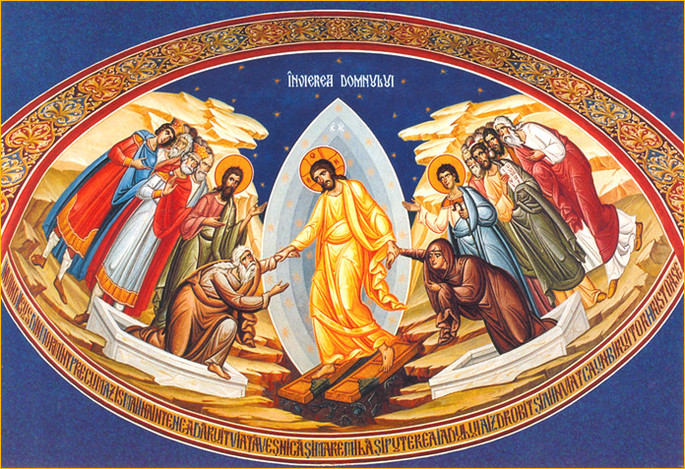Besides the religious aspect, the feast is accompanied by many ancient traditions and meanings, from pre-Christian period, which turned into habits that accompany the Easter holidays. In the Orthodox tradition, the beginning of the Easter feast is marked by fasting for seven weeks.
A particular emphasis is put on the Holy Week, beginning with Palm Sunday (April 24th). In this day it is celebrated the entry of Jesus into Jerusalem. The believers go to the Mass with willow branches in their hands (in remembrance of the olive branches, with which Jesus was greeted), and after being hallowed they put them at icons, windows, doors, gates to bring prosperity and health. In the evening of Palm Sunday start also the “Denii” (special religious services).
Every evening they celebrate the harvest and the believers, with candles in their hands, surround the church singing “prohodul” (an anthem dedicated to Jesus Christ). Each day of the Holy Week has one liturgical signification, but the deepest symbols are found in: the Holy Wednesday (the day of anointing), the Holy Thursday (the day of washing the feet of the apostles, the Last Supper, the sale and the capture of Jesus), the Holy Friday (he day of the sufferings and crucifixion), the Holy Saturday (the day of the burial).
In this week, according to the tradition and customs, people clean their homes, whitewash the houses, fix what is broken. Thursdays they go to church with “colaci”,"prescura", wine, honey and fruits, to be blessed and then are given for the souls of the dead. It's the day dedicated to the preparation of the sponge cakes, “pasca” (sweet bread with cheese), the bread, all that needs to be baked, and for painting the eggs.
The “pasca” is the blessed bread, which reminds us of the “Jewish bread” used during the “Exodus from Egypt”. The sponge cake, which is actually a “sweetened bread”, symbolizes the joy of the feast. The egg symbolizes the life, and the red color signifies the blood flowed from the wounds of Jesus. Along the time, the egg dyeing and decoration receives new meanings and the operation itself assumes even artistic valences.
On the night of Saturday to Sunday, the faithfuls go to church, where they wait the “Resurrection”. At 12 pm, the priests with lighted candles in their hands, announce the long awaited event, shouting, “Christ is risen”. The crowd responds with joy and enthusiasm, “Truly resurrected”. People with lighted candles go to their homes by giving light to those who come out of backyards and announce the "Resurrection."
From this moment begins the "feast of light and joy"!
































